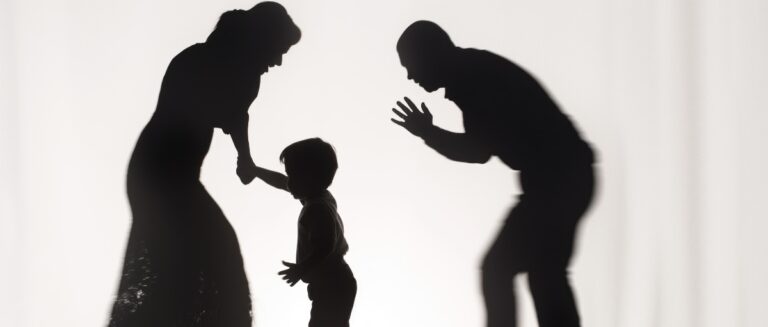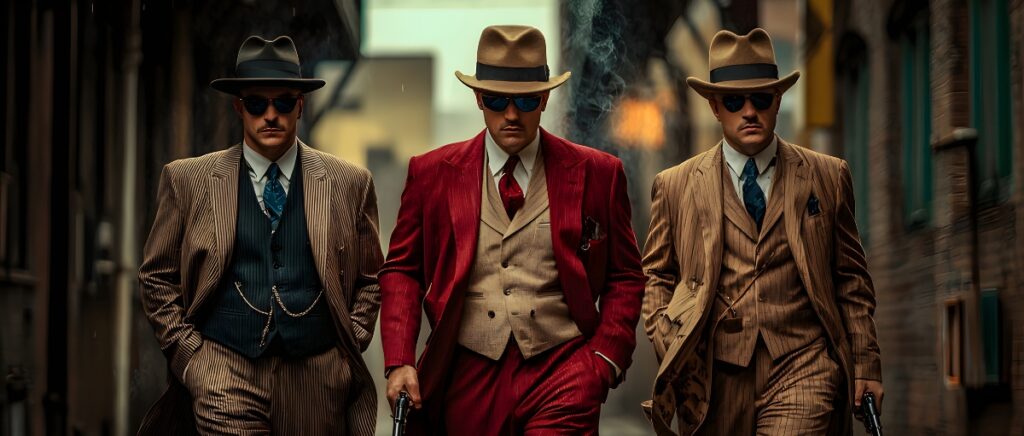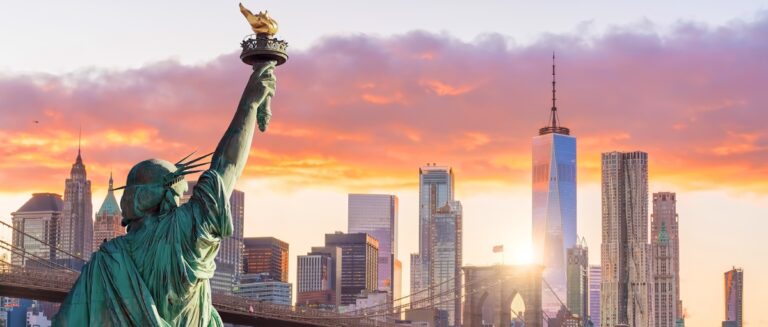Picture a quintessential mob boss, and you might imagine a ruthless but charismatic figure at the peak of their powers, or perhaps a has-been who’s long since traded their gun for a golf club and retired to Florida to live out their golden years. But for some of the most famous mobsters still alive, growing old is no reason to go straight.
Far from the senior crew you might expect, this aging “Goodfellas” generation continues to oversee vast criminal enterprises, raking in up to $110 billion a year through illegal rackets like extortion, fraud, and drug trafficking.
Law enforcement spent decades trying to curb the influence of organized crime, and while the mob’s power has undoubtedly waned since its mid-20th-century heyday, a stubborn core of mafiosos has maintained their grip well past retirement age. Men like the notorious Matteo Messina Denaro, “Diabolik,” who at 58 still runs the Sicilian Mafia’s billion-dollar empire, and 88-year-old Chicago Outfit boss Johnny “No Nose” DiFronzo, who’s never spent a day in prison.
As dangerous in their twilight years as in their prime, these underworld elders are determined to die with their boots on.
1. The Teflon Don of Sicily: Matteo Messina Denaro
Known for evading capture for nearly three decades, Matteo Messina Denaro was one of Sicily’s most notorious and elusive mafia bosses.
Capo of Cosa Nostra
Matteo Messina Denaro, also known as “Diabolik,” is the capo di tutti capi—boss of all bosses—of the Sicilian Mafia. Born in 1962 in Castelvetrano, Sicily, Denaro was initiated into the mafia in his teens, learning the brutal trade under the tutelage of his father, Francesco, a powerful mob boss. After his father died of natural causes in 1998, Denaro quickly consolidated power, proving himself an ambitious and ruthless leader.
Decades of Drugs and Death
Under Denaro’s reign, the Sicilian Mafia has quietly rebuilt itself into a 21st-century criminal powerhouse. Through an international web of drug trafficking, extortion, and money laundering, the syndicate created an empire, making an estimated $1.5 billion. All that money comes at the cost of blood—Denaro himself has been convicted in absentia of dozens of murders.
The Invisible Fugitive
Despite his fearsome reputation, Denaro is a mysterious, almost mythical figure. He’s been a fugitive since 1993, wanted by authorities for mafia association, murder, and other crimes too numerous to list. Over the decades, he’s proven a master at evading capture, likely thanks to an extensive network of corrupt politicians and officials who alert him to law enforcement’s every move.
Denaro avoids modern technology, conducting all business face-to-face to prevent wiretaps and surveillance. No known photos exist of him in the last 30 years, allowing him to move unseen in public—some say he’s even traveled abroad for medical treatment. His power and elusiveness have earned him the nickname “The Invisible Man.”
Still Pulling Strings
Now in his early 60s and rumored to be battling a serious illness, Denaro is no less dangerous. From the shadows, he continues to coordinate global drug and weapons smuggling operations that funnel billions into mafia coffers. He remains the undisputed head of Cosa Nostra, commanding an army of nearly 1,100 soldiers and associates primarily in New York.
Italian authorities prioritized capturing Denaro for thirty years before finally accomplishing the task in January 2023.
2. The Billion-Dollar “Brainy Don”: Semion Mogilevich
Semion Mogilevich, dubbed the “Brainy Don,” is a Russian mobster infamous for his billion-dollar criminal empire and complex international schemes.
The World’s Most Powerful Mobster?
When the FBI added Semion Mogilevich to their Ten Most Wanted list in 2009, they described the Ukrainian-born crime boss as “the most dangerous mobster in the world.” It’s not hard to see why. For three decades, Mogilevich has been the key figure in the Russian mafia, overseeing a vast global empire of illegal and legitimate businesses.
The Russian Mafia’s Money Man
Mogilevich, now 76, is believed to have gotten his start in organized crime through traditional racketeering and fraud in Eastern Europe. But by the 1990s, he expanded into more sophisticated and lucrative ventures:
- Controlling a network of international shell companies.
- Allegedly trading in weapons, nuclear material, and conflict diamonds.
- Running multi-billion dollar money laundering and tax evasion schemes.
Shielded by Corruption
Despite his long rap sheet, Mogilevich has proven untouchable, thanks in no small part to his rumored close ties to high-level Russian government officials, including former presidents Boris Yeltsin and Vladimir Putin. In 2003, he was indicted by U.S. authorities for his role in a $150 million stock fraud scheme, but he remains safely ensconced in Moscow, where he lives openly, protected from extradition.
Even in his late 70s, Mogilevich remained highly active behind the scenes of global organized crime. The true extent of his power and influence may never be known.
3. “Made” for Life—Chicago’s Old Man, John DiFronzo
John DiFronzo, known as “Chicago’s Old Man,” was a powerful mob boss who was deeply entrenched in the city’s organized crime for decades.
The Outfit’s Elder Statesman
Reaching 89 years old, John “No Nose” DiFronzo was one of the oldest mob bosses in America. A made man since the days of Al Capone, DiFronzo has been a fixture in the Chicago Outfit for over half a century, steadily rising through the ranks to become the organization’s de facto leader.
A Nose for Success
DiFronzo earned his unflattering nickname after part of his schnoz was sliced off by jumping through a window. (Though plastic surgery has since restored his profile.) That early taste for violence seems to have served him well in the underworld. By the late 1980s, DiFronzo was a capo and key lieutenant to boss Sam Carlisi.
After Carlisi was sent to prison in the early 90s, DiFronzo stepped in as day-to-day boss, gaining a reputation as a savvy and discreet leader skilled at evading law enforcement. While other Outfit leaders saw their regimes crumble under federal indictments, DiFronzo managed to insulate himself from prosecution.
An (Almost) Untouchable Legacy
In 1993, DiFronzo was convicted of racketeering and illegal gambling charges but served only brief stints in prison. He still allegedly controls the Outfit’s lucrative video poker machine business that spans Chicago’s western suburbs.
Now in his tenth decade, DiFronzo isn’t as spry as he once was. He mostly stays close to home, issuing orders and resolving disputes over the phone. But until someone finally convinces the wily old Capo to step aside, he remains the Outfit’s elder statesman—a living relic of the bad old days of Capone and Nitti.
The American Mafia Today
The Mob’s Decline
In the decades following the high-profile mafia trials of the 1980s and 90s, aggressive federal prosecutions dealt a serious blow to the American Mob. Through the Racketeer Influenced and Corrupt Organizations (RICO) Act, authorities were able to indict entire crime families, leading to the conviction of powerful bosses like John Gotti, Charles “Lucky” Luciano and Vincent Gigante. By the early 2000s, the number of made men had dwindled to what it was in the mafia’s mid-century heyday.
Entrenched in the Shadows
But while the mob may be diminished, it is far from defeated. In places like New York City, New Jersey, and Chicago, the mafia members still alive remain deeply entrenched, having adapted to survive in a more covert form. Today’s mobsters have largely abandoned the flashy lifestyle of their predecessors, opting to stay behind the scenes to avoid drawing attention from law enforcement.
The Five Families of New York—Bonanno, Colombo, Gambino, Genovese, and Lucchese—still control significant swaths of the city’s construction and transportation industries. In Chicago, the Outfit maintains its grip on illegal gambling and loan sharking.
New Frontiers in Crime
The mob has expanded into new, more sophisticated criminal ventures in recent years. Mafia groups have established a growing presence in cybercrime, using offshore casino websites to launder money and dabbling in identity theft and fraud. They’ve also capitalized on the opioid epidemic, forging ties with Mexican drug cartels to smuggle fentanyl and other narcotics into the U.S.
The Old Mobsters and the New
As the old guard of bosses like Lucky Luciano and capos gradually dies out, a new generation of current mafia bosses is rising to take their place. These younger mobsters, like Michael Persico of the Colombo crime family and Michael Taccetta of the Luccheses, have proven just as ruthless as their predecessors in eliminating rivals and expanding into fresh rackets.
Though the names and faces may be changing, all signs point to the mob’s continued survival in the 21st century—albeit in an evolving form that’s harder than ever to root out.
The Mafia’s Murky Future
For the aging bosses who remain at the top of the mafia pyramid, the sun is slowly setting. The generation that came of age during the mob’s 20th-century golden years is gradually giving way—dying of old age or dwindling for years in prison cells. In their place, a new crop of famous gangsters is rising, eager to make their mark on the underworld.
What’s unlikely to change anytime soon is the public’s timeless fascination with the powerful, shadowy crime bosses who seem to exist in a world above the law. From John Gotti to Al Capone to the enduring fictional Don Corleone, mafia dons have long loomed large in the popular imagination—and the modern mobsters following in their footsteps are no exception.
As long as there are massive profits to be made from humanity’s vices, there will be organized criminal networks to ruthlessly exploit them. While the last old-school gangsters may soon sleep with the fishes, their self-proclaimed heirs are all too ready to take the reins and guide the mafia into an uncertain future. The law-abiding public can only remain vigilant—and perhaps morbidly entertained.
Sources
ANSA. (2015). European mafias generate 110bn a year. Retrieved from https://www.ansa.it/english/news/politics/2015/05/04/european-mafias-generate-110bn-a-year_1d994ba3-e61b-441d-ae11-222146fa3659.html
Wikipedia. (n.d.). Matteo Messina Denaro. Retrieved from https://en.wikipedia.org/wiki/Matteo_Messina_Denaro
The Guardian. (2023). How mafia ‘Scarlet Pimpernel’ eluded capture for 30 years: Matteo Messina Denaro. Retrieved from https://www.theguardian.com/world/2023/jan/21/how-mafia-scarlet-pimpernel-eluded-capture-for-30-years-matteo-messina-denaro
Time. (2023). The arrest of Matteo Messina Denaro and mafia violence in Italy. Retrieved from https://time.com/6247782/matteo-messina-denaro-arrest-mafia-violence/
National Institute of Justice (NIJ). (2007). Investigating and prosecuting criminal organizations. Retrieved from https://www.ojp.gov/pdffiles1/nij/218555.pdf
CNN. (2023). Mafia boss Matteo Messina Denaro dies in Italian hospital. Retrieved from https://www.cnn.com/2023/09/25/europe/matteo-messina-denaro-death-mafia-italy-intl-hnk/index.html
Federal Bureau of Investigation (FBI). (2009). Press release: Philadelphia crime family indictment. Retrieved from https://archives.fbi.gov/archives/philadelphia/press-releases/2009/ph102109a.htm
Chicago Tribune. (2018). Reputed Chicago Outfit boss John DiFronzo dies at 89. Retrieved from https://www.chicagotribune.com/2018/05/30/reputed-chicago-outfit-boss-john-difronzo-dies-at-89/
FBI. (n.d.). Al Capone case history. Retrieved from https://www.fbi.gov/history/famous-cases/al-capone
ABC7 Chicago. (2018). Johnny ‘No Nose’ DiFronzo: Chicago mobster profile. Retrieved from https://abc7chicago.com/johnny-no-nose-difronzo-bananas-john/3532932/
Chicago Tribune. (1997). Imprisoned mobster Sam Carlisi, 75, dies. Retrieved from https://www.chicagotribune.com/1997/01/04/imprisoned-mobster-sam-carlisi-75/
Chicago Tribune. (1993). U.S. jury convicts reputed mob chiefs. Retrieved from https://www.chicagotribune.com/1993/03/19/us-jury-convicts-reputed-mob-chiefs/
National Criminal Justice Reference Service (NCJRS). (n.d.). RICO: Racketeer Influenced and Corrupt Organizations Act. Retrieved from https://www.ojp.gov/ncjrs/virtual-library/abstracts/rico-racketeer-influenced-and-corrupt-organizations-act-statute
History. (2018). Who were the mafia’s five families? Retrieved from https://www.history.com/news/who-were-the-mafia-five-families
FBI. (n.d.). The Chicago mafia: Case history. Retrieved from https://www.fbi.gov/news/stories/the-chicago-mafia
United Nations Office on Drugs and Crime (UNODC). (n.d.). Criminal groups engaging in cyber-organized crime. Retrieved from https://www.unodc.org/e4j/zh/cybercrime/module-13/key-issues/criminal-groups-engaging-in-cyber-organized-crime











